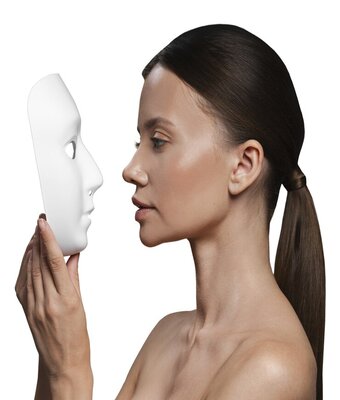
Unlocking Facial Symmetry: Causes, Treatments, and Expert Advice
Facial asymmetry is a common concern for many individuals seeking to enhance their appearance and improve their self-confidence. While perfect symmetry is rare in nature and especially in human faces, noticeable imbalances can sometimes lead to dissatisfaction with one’s facial aesthetics. In this blog, we’ll explore the causes of facial asymmetry and discuss various treatment options available, with insights from our dermatologists.
Causes of Facial Asymmetry
Facial asymmetry can arise from a variety of factors, ranging from genetic influences to lifestyle habits. Here are some of the most common causes:
1. Genetic Factors
Genetics play a significant role in determining the structure and symmetry of our faces. Inherited traits from parents can lead to differences in bone structure, muscle development, and the distribution of fat, all of which contribute to facial asymmetry.
2. Developmental Factors
Asymmetry can also develop during childhood due to uneven growth patterns. Conditions like hemifacial microsomia, where one side of the face grows less than the other, can result in significant asymmetry. Even minor discrepancies in growth can lead to noticeable differences in facial appearance.
3. Injury or Trauma
Facial injuries or trauma, such as fractures or deep cuts, can lead to asymmetry if the bones and tissues do not heal evenly. Accidents or sports injuries can cause lasting changes in facial structure, affecting the overall balance of the face.
4. Dental Issues
Dental problems, including malocclusion (misalignment of the teeth), can influence the symmetry of the lower face. Over time, poor dental alignment can affect jaw position and muscle balance, leading to visible asymmetry.
5. Habits and Lifestyle
Certain habits, such as sleeping on one side of the face, prolonged use of one side for chewing, or resting the face on a hand, can contribute to muscle imbalances and asymmetry. Additionally, factors like poor posture can affect the alignment of the neck and jaw, impacting facial symmetry.
6. Aging
As we age, the natural loss of skin elasticity and volume can cause one side of the face to sag more than the other. Asymmetrical aging can result from differences in muscle strength, sun exposure, or previous facial habits.
Treatments for Facial Asymmetry
While some degree of facial asymmetry is natural and often unnoticed by others, those seeking to improve their facial aesthetics have several treatment options to consider. Our dermatologists in London offer a range of solutions tailored to individual needs.
1. Dermal Fillers
Dermal fillers are a popular non-surgical option for correcting facial asymmetry. By injecting hyaluronic acid or other filler substances, dermatologists can add volume to specific areas of the face, balancing out uneven features. Fillers can be used to enhance the cheeks, lips, jawline, and temples, providing immediate and noticeable improvements.
2. Botox
Botox injections can help address asymmetry caused by muscle imbalances. By relaxing overactive muscles on one side of the face, Botox can create a more symmetrical appearance. This treatment is particularly effective for asymmetries around the eyes and forehead.
3. Facial Exercises
For mild asymmetry, facial exercises might help improve muscle tone and balance. Specific exercises targeting weaker muscles can enhance symmetry over time. However, it’s essential to consult with a specialist to ensure exercises are performed correctly to avoid further imbalance.
4. Orthodontics and Dental Treatments
Correcting dental issues through orthodontics can significantly impact facial symmetry. Braces, aligners, or other dental appliances can realign teeth and jaws, improving the overall balance of the face. In some cases, surgical intervention might be necessary to address severe misalignments.
5. Surgical Options
For more pronounced asymmetry, surgical procedures such as rhinoplasty (nose surgery), genioplasty (chin surgery), or orthognathic surgery (jaw surgery) might be recommended. These procedures can reshape bones and tissues, providing long-lasting results. Surgery is typically considered when non-invasive treatments are insufficient.
6. Skin Resurfacing
Skin resurfacing techniques, such as laser therapy or chemical peels, can improve the texture and appearance of the skin. While not directly addressing asymmetry, these treatments can enhance overall facial aesthetics by reducing the appearance of scars, wrinkles, and other imperfections.
Conclusion
Facial asymmetry is a multifaceted issue with a variety of causes, from genetics to lifestyle habits. While some degree of asymmetry is natural and even adds to the uniqueness of an individual’s appearance, noticeable imbalances can affect one’s confidence and satisfaction with their facial aesthetics.
With advancements in dermatological and cosmetic treatments, there are now numerous options available to address facial asymmetry. Whether through non-surgical methods like dermal fillers and Botox or more permanent solutions like surgical intervention, individuals can achieve a more balanced and harmonious appearance.
If you’re concerned about facial asymmetry and seeking professional advice, our dermatologists in London are equipped with the expertise and tools to help you find the best treatment plan tailored to your needs. Embrace the journey towards enhancing your natural beauty and achieving the facial aesthetics you desire.
FAQ
Can facial asymmetry be corrected without surgery?
Yes, non-surgical options such as dermal fillers, Botox, and facial exercises can help improve facial symmetry.
How long do the results of non-surgical treatments last?
Results vary depending on the treatment used. Dermal fillers typically last 6-18 months, while Botox results last 3-6 months. Facial exercises require consistent practice for lasting improvements.
Are there any risks associated with non-surgical treatments?
While non-surgical treatments are generally safe, there may be risks such as bruising, swelling, or allergic reactions. It’s essential to consult with a qualified dermatologist to discuss potential risks and benefits.
Can facial asymmetry be caused by dental issues alone?
Yes, dental issues like malocclusion can contribute to asymmetry, particularly in the lower face and jawline. Orthodontic treatments may help correct these issues.


